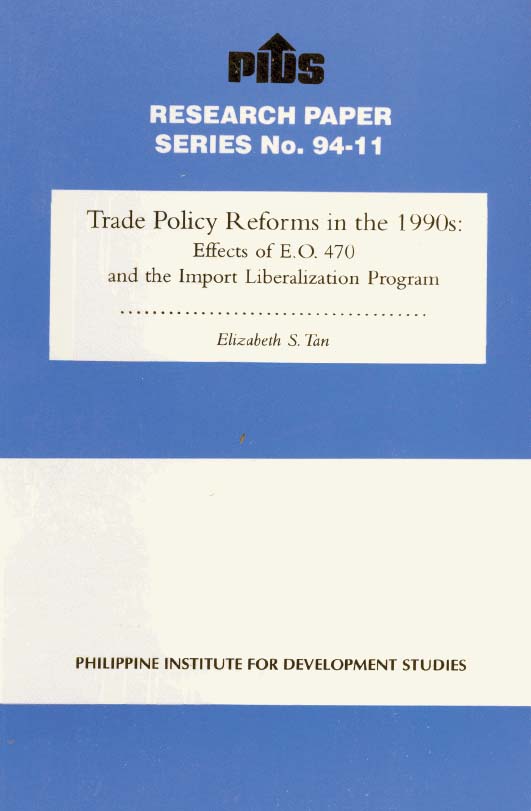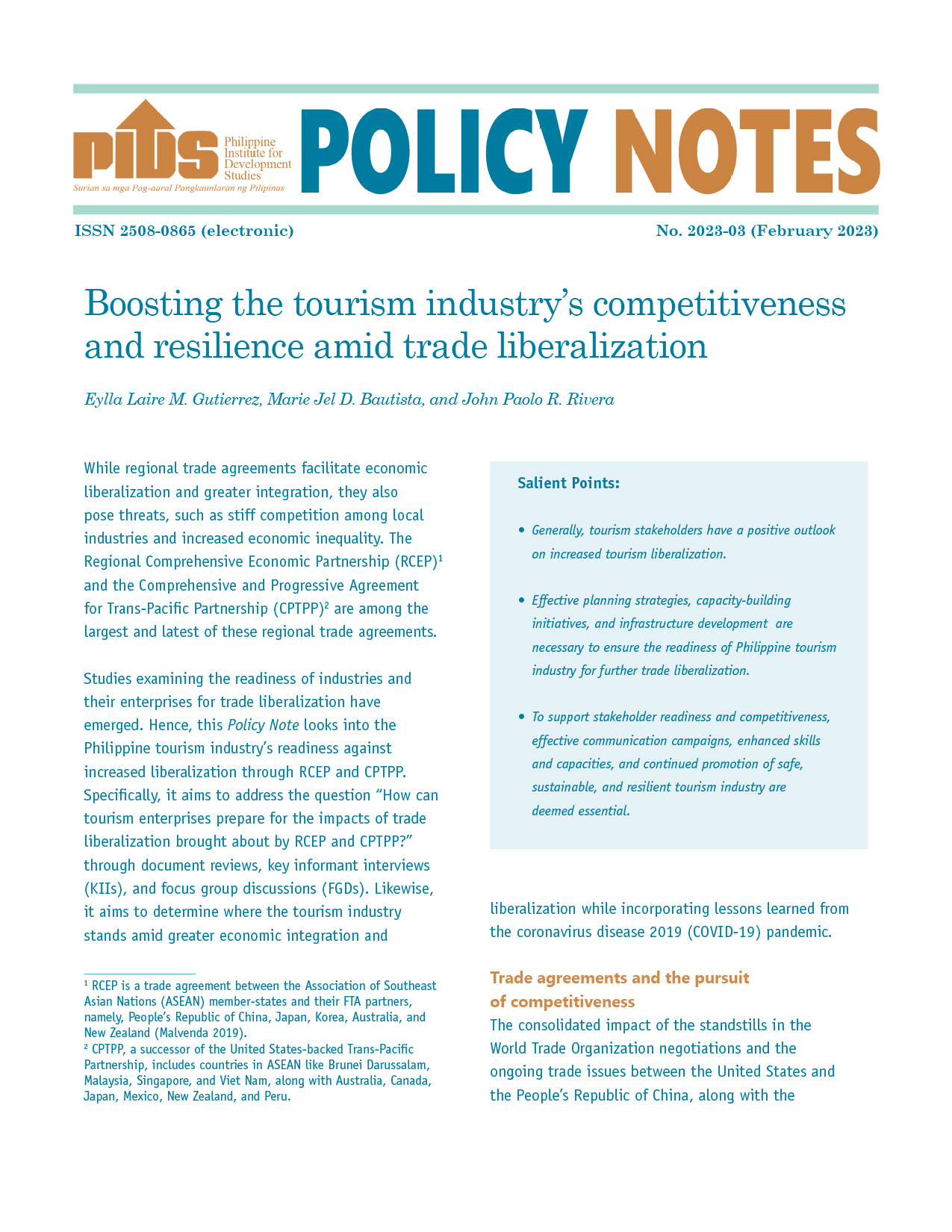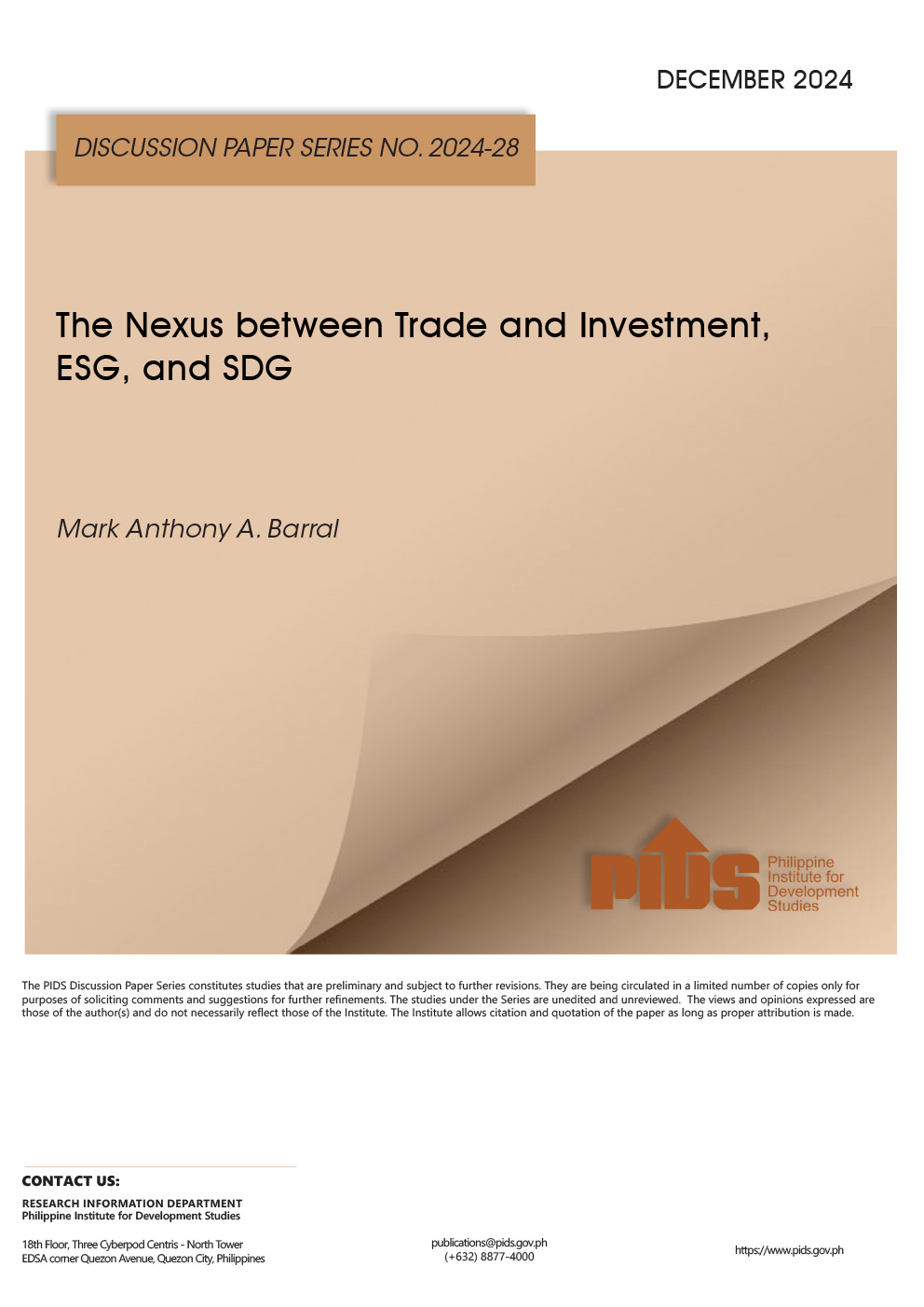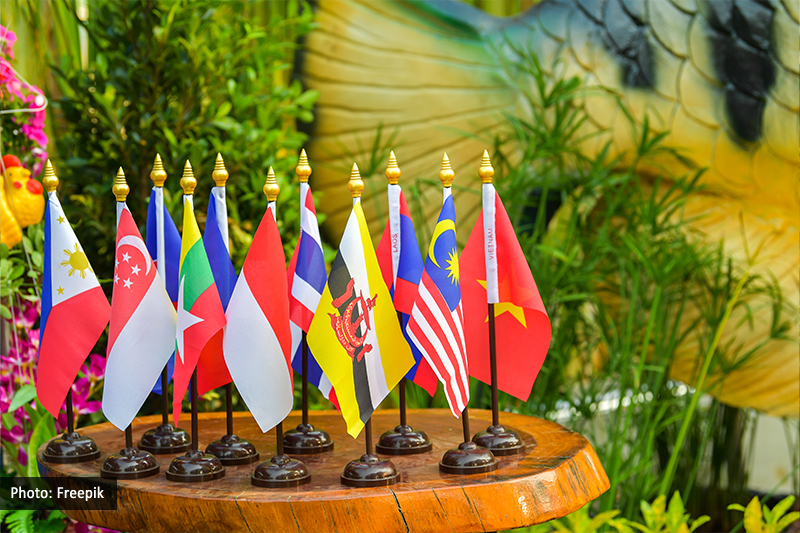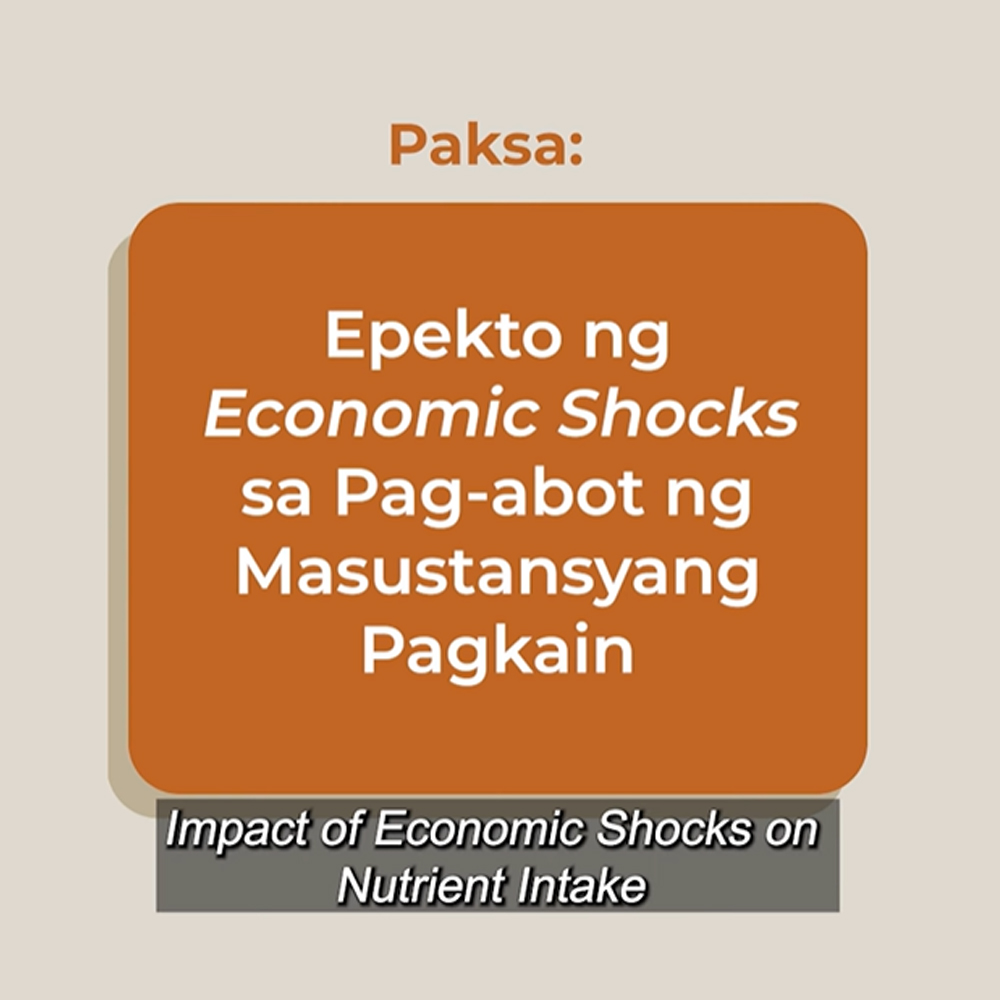Even with lapses in its implementation during the 1980s, trade reform has been continuously brought to the fore of structural adjustment program. It has become increasingly crucial during the 1990s not only because of the backlash of import-substitution but also of the country’s heavy foreign debt burden. In this light, this paper assesses the short- and medium-term impact of 1990 trade reform policies using a partial equilibrium model. An in-depth analysis indicates that reforms such as EO 8 has actually reversed the benefits gained from its precedent, EO 470. It has failed to change the protection structure as exhibited by the continuing bias against exports. As manifested by the inverted normal distribution of effective protection rate, it has also failed to achieve neutral form of protection. In addition, this paper points out an important tool in trade reform: real exchange rate adjustment. Results indicate that trade policy reform without reorganization on exchange rate and inflation policy may defeat the gains obtained from the previous policies or may not lead to its full realization.
Citations
This publication has been cited 3 times
- Bautista, Romeo M. and Mario B. Lamberte. 1996. The Philippines: Economic developments and prospects. Asian-Pacific Economic Literature, 10, no. 2, 16-31. Asia Pacific School of Economics and Government, The Australian National University.
- Mangabat, Minda. 1998. Effects of trade liberalization on agriculture in the Philippines: institutional and structural aspects. Working Papers 32680. United Nations Centre for Alleviation of Poverty Through Secondary Crops' Development in Asia and the Pacific (CAPSA).
- Yuki, Kazuhiro. 2007. Determinants of sectoral composition in a small open economy: Theoretical and quantitative investigations of the Philippines. The Developing Economies, 45, no. 4, 391-436. Institute of Developing Economies.

